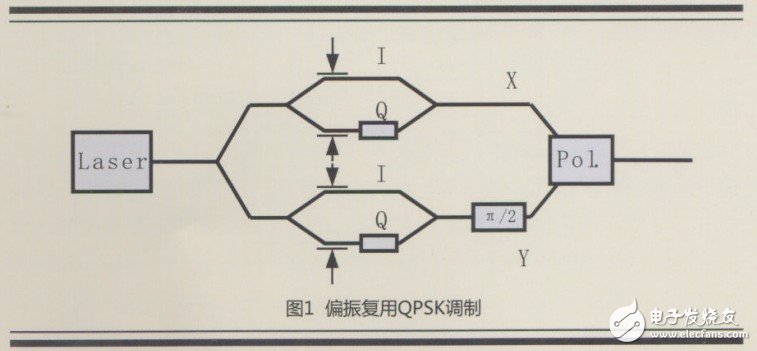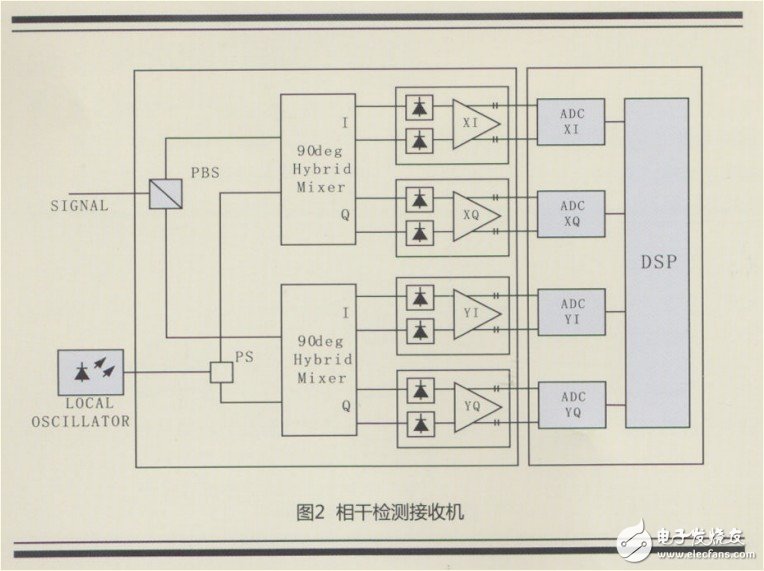introduction
With the start of large-scale deployment of 40Gb / s, a variety of new 100G / s modulation and coding formats have emerged in the industry. In the face of numerous transmission patterns with different characteristics, based on comprehensive consideration of other system design parameters, the industry mainly focuses on transmission distance, channel spacing, compatibility with 40Gb / s and 10Gb / s systems, module cost and transmission performance. Make comprehensive choices in terms of balance.
With the advancement of high-speed digital signal processing technology (DSP) and analog-to-digital conversion technology (ADC), coherent optical communication has become a research hotspot. The combination of coherent detection and DSP technology can carry out carrier phase synchronization and polarization tracking in the electrical domain, eliminating two major obstacles to traditional coherent reception. The DSP-based coherent receiver has a simple structure and has hardware transparency; it can compensate for various transmission impairments in the electrical domain, simplify the transmission link, and reduce transmission costs; support multi-ary modulation format and polarization multiplexing to achieve high spectral efficiency . Through the research and development of 100Gb / s modules in the industry for one or two years, the 100G / s polarization multiplexing four-phase phase shift keying coherent module (Coherent PM-QPSK) is becoming the industry's main choice.
Basic principles of coherent optical communication
The coherent optical communication system can divide the optical frequency band into many frequency channels, so that the optical frequency band is fully utilized, that is, multi-channel optical fiber communication. Coherent optical communication technology has the advantage of high receiving sensitivity. The receiving sensitivity of coherent detection technology can be 18dB higher than that of direct detection technology.

Figure 1 shows that the transmitter uses polarization multiplexing. The laser signal as a carrier is divided into two X / Y channels by PBS (polarization beam splitter). Each signal passes through an I / Q modulator (I channel) composed of 2 MZ modulators. And Q-channel phase difference 90 °) respectively modulate the 10.7 / 27.5Gb / s signal to the carrier, and then combine the X-axis and Y-axis optical signals by polarization multiplexer according to polarization multiplexing and send them through the optical fiber, thus Realized the transmission of 40 / 100Gb / s on a single fiber.
At the receiving end, unlike the intensity modulation one-to-one direct detection system, the coherent optical fiber communication system adds a local oscillator light source (LO) required for heterodyne or homodyne reception in the optical receiver. The light wave output by the light source is different from the received The modulated light wave is photoelectrically mixed under the conditions of wavefront matching and polarization matching. Slightly changing the optical frequency of the local oscillator laser can change the selected channel, so the linewidth of the local oscillator laser is very high. The signal light wave field strength output after mixing is proportional to the square of the sum of the local oscillator light wave field strength, from which the difference frequency signal of the local oscillator light wave and the signal light wave can be selected. Since the change law of the difference frequency signal is the same as the change law of the signal light wave, unlike the direct detection communication method, the detection current only reflects the intensity of the light wave, so various modulation methods such as amplitude, frequency, phase, and polarization can be realized.

In the receiver coherent detection method in Figure 2, the received signal is decomposed into two orthogonal signals by a polarized beam splitter PBS (PolarizaTIonBeamSplitter), each of which is connected to a local light source. LO mixing, the carrier frequency control accuracy of this local light source is hundreds of KHz. After mixing, four polarization and phase orthogonal optical signals are obtained, which are respectively detected by PIN, and converted into four digital electrical signals by A / D circuit after electric amplification and filtering. The digital electrical signal is realized by digital equalization of digital signal processing (DSP) chip: timing recovery, signal recovery, polarization and PMD tracking, and dispersion compensation.
Surround Speakers,Home Theater Systems,Wooden Cabinet Speakers,Commercial Conference Speaker Systems
The ASI Audio Technology Co., Ltd , https://www.asi-sound.com
